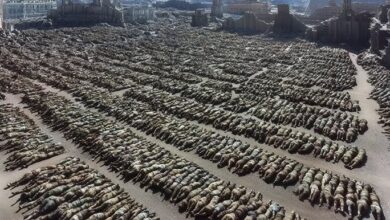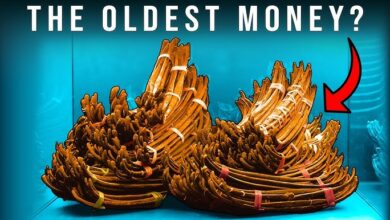Rescue Ship Makes Horrifying Discovery

In the past few centuries, a few remote regions on Earth, particularly the Arctic, Antarctic, and the Northeast and Northwest passages, remained unexplored despite many ambitious expeditions. In the mid-1800s, attempts to find a navigable Northwest Passage from the Atlantic to the Pacific proved challenging and were eventually abandoned. However, this sparked renewed interest in Arctic exploration, especially with the public’s fascination with the North Pole.
In 1881, the U.S. Congress authorized funding for an Arctic expedition led by Lieutenant Adolphus Greely, a Civil War veteran with no Arctic experience but strong leadership skills. The expedition aimed to make scientific observations, establish a research station, and claim the record for the northernmost exploration. The team embarked on the steamship *Proteus*, reaching Lady Franklin Bay in Greenland after several stops to gather supplies and additional crew members.
After unloading supplies, the team established Fort Conger, where they began scientific studies and exploration. They documented the Arctic’s landscapes, weather, and climate during their initial months, which were productive and filled with excitement. However, as winter set in, darkness enveloped the region for 137 days, forcing the crew into inactivity, which affected their morale.
When the sun returned in March 1882, Greely organized two separate expeditions to push further north in pursuit of records. Greely instilled a sense of competition, with the first team to reach the farthest north receiving lasting recognition. One group, led by Lieutenant James Lockwood, achieved a record of 83° 23′ N, coming closer to the North Pole than any previous explorers.

As summer approached, a resupply ship, the *Neptune*, was expected to deliver more supplies. However, due to harsh weather conditions, the ship could not reach Fort Conger and instead left supplies at Cape Sabine, which the expedition team could not retrieve as winter descended again. Tensions rose among the team, leading to conflicts and deteriorating morale.
By August 1883, it became clear that a rescue would not arrive. Greely and his team faced dwindling supplies and harsh conditions, prompting them to begin a grueling journey toward Cape Sabine. Their efforts were hampered by poor weather, hunger, and frostbite. After several harrowing days, they reached an area where they found only rotten supplies from past expeditions.
Back home, Greely’s wife, Henrietta, sought media attention to pressure the military into action, leading to plans for a rescue operation. However, political delays and disagreements slowed the response. Tragedy struck when Sergeant William Cross died from scurvy and malnutrition in January 1884. The remaining expedition members faced extreme food shortages and dangerous conditions, exacerbated by a toxic incident in their shelter.
Ultimately, the expedition faced severe challenges, including theft within the group and increasing desperation as they struggled to survive the harsh Arctic winter, highlighting the perilous nature of their mission and the impact of leadership and circumstances on their fate.
On April 5th, two members of an Arctic expedition tragically died from starvation. As spring approached, Adolphus Greely decided it was critical to send a small team to search for food caches. George and Joseph had previously set out to transport preserved meat back to camp but had to abandon the effort due to Joseph’s frostbite. Months later, with three members already dead and the remaining crew suffering from malnutrition, retrieving those supplies became urgent.
Despite his poor health, George was ordered to undertake the mission with the expedition’s cook. Tragically, he died just two days later, likely from starvation and exhaustion. The cook also failed to find the meat and returned empty-handed. Soon after, another member of the expedition fell unconscious and died from starvation.
Frederick Klingberg, a personal friend of Greely, was already struggling with grief over his wife’s death. Initially, he joined the expedition in hopes of finding solace away from home. However, once they established Fort Conger, tensions rose between him and Greely, leading to Frederick’s forced resignation. He prepared to leave but was unable to board the departing ship, leaving him to face the harsh conditions of the Arctic.
As the situation deteriorated, Frederick fell into a state of derangement, communicating only in a childlike manner. Meanwhile, the team faced continuous hardship, including the drowning of an Inuit dog sled driver and theft of food by one member, Charles. Greely, frustrated with the chaos, declared that anyone caught stealing food would be executed. Charles, disregarding this threat, was caught stealing again and was shot by Greely.
By early June, only seven members of the expedition survived, having resorted to eating moss, candle wax, and animal droppings. On July 22nd, a rescue team arrived. However, the survivors were so weak they could hardly celebrate. A doctor examined them and found they were mere hours from death.
After their rescue, Joseph required emergency surgery for gangrene but sadly passed away shortly after. News of their survival spread worldwide, but soon rumors about cannibalism among the survivors began to circulate. An autopsy of Frederick revealed horrific findings; his body showed signs of having been mutilated. This led to suspicions that the survivors had resorted to cannibalism out of desperation.
Despite evidence and rumors, the survivors denied any such acts, and the theory of factions within the group was never confirmed. Greely would later receive the Congressional Medal of Honor, but the dark legacy of the expedition’s survival story remained, casting a shadow over their experiences.








